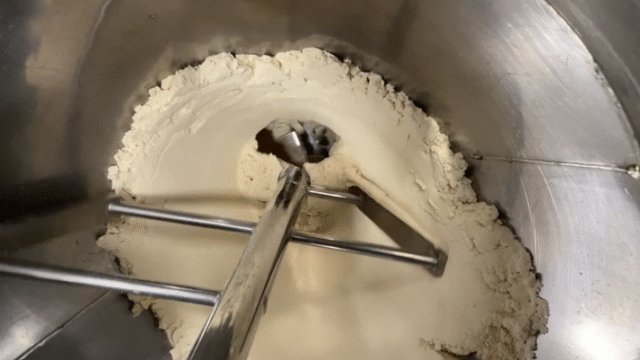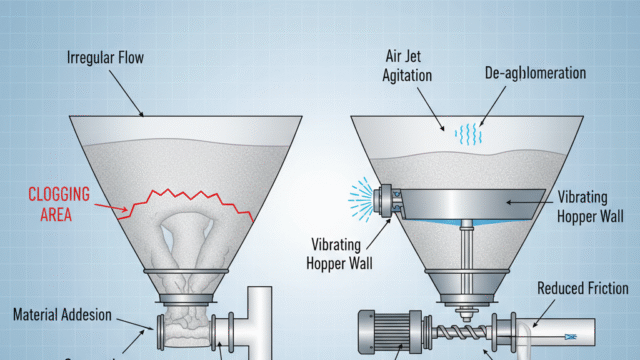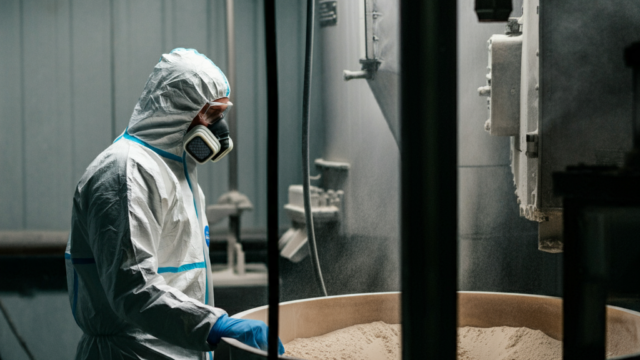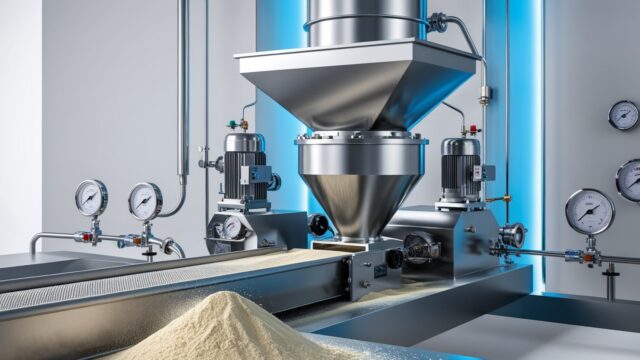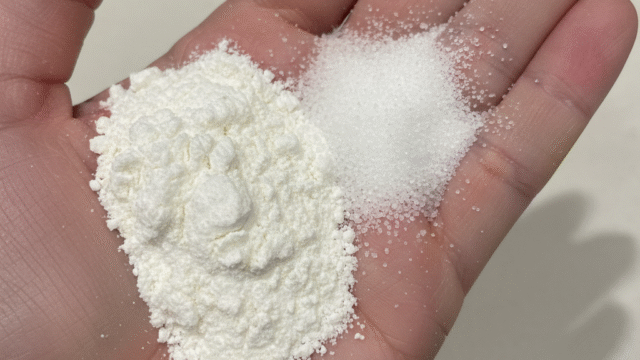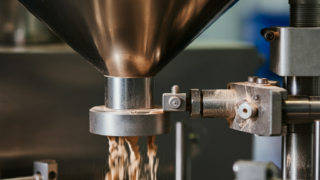Automation of Powder Handling in Manufacturing Processes: Measures to Reduce Human Errors and Equipment Configuration
In powder handling manufacturing processes, automation is essential to improve efficiency and accuracy. By advancing automation, human errors can be minimized, and the overall stability of the production process can be enhanced.
- Stable Supply through the Automation of Screw Feeders
Screw feeders automatically control the supply amount, providing precise feeding while minimizing operator intervention. Advancing automation brings the following benefits:
- Automatic Feed Adjustment: The supply rate of the screw feeder is adjusted by controlling the screw’s rotation speed with an inverter. For simple continuous feeding, the feeder operates without interruption. When the supply needs to be managed by weight data, a feedback system is implemented. By ensuring the required amount is supplied, the risks of over- or under-supply are reduced, leading to improved production efficiency.
- Continuous Operation: Automated screw feeders maintain a stable supply around the clock, maximizing the operational efficiency of the production line. As human intervention is not needed, supply errors and inaccuracies are minimized.
- Automated Conveyance System with an Air Suction Loader
The air suction loader automates the conveyance of powder, significantly reducing the burden on employees who would otherwise need to refill hoppers and preventing errors during transport.
- Automatic Conveyance Path Setting: The system can be configured to ensure the powder is reliably transported to hoppers installed at high elevations. This reduces the risk of scattering and foreign matter contamination that often occurs during manual lifting and feeding of raw materials.
- Automated Conveyance Timing: The destination hopper is monitored by sensors, and the loader operates when a signal is received to indicate a need for refilling. Stoppage is also controlled by sensors that detect the hopper’s upper limit. The suction and stop times are adjusted according to the characteristics of the powder, ensuring optimal conveyance conditions. By fully suctioning without leaving residue in the hose, blockages during transport are prevented.
- Effects of Introducing Automation
Advancing automation in production lines yields the following benefits:
- Reduction of Human Errors: With fewer manual operations and more consistent automated processes, the risks of supply and conveyance errors are significantly reduced.
- Reduction of Operator Burden: The elimination of repetitive heavy labor and delicate manual operations reduces worker fatigue and the risk of injury, providing a safer and more efficient working environment.
- Increased Productivity: Automation allows for 24-hour operation, improving overall production capacity. Additionally, real-time monitoring of operating conditions enables quick response to any abnormalities.
Conclusion
Automation of powder production lines greatly contributes to improved operational efficiency and reduced human errors. By combining automated raw material feeding and precise automated dosing, manufacturing processes can be optimized, enabling the efficient production of stable, high-quality products. In today’s industry, where worker safety and product stability are paramount, investing in automation equipment is becoming increasingly indispensable.from manual operations to screw feeders increasingly popular in recent years.
PLEASE VISIT OUR WEBSITE




